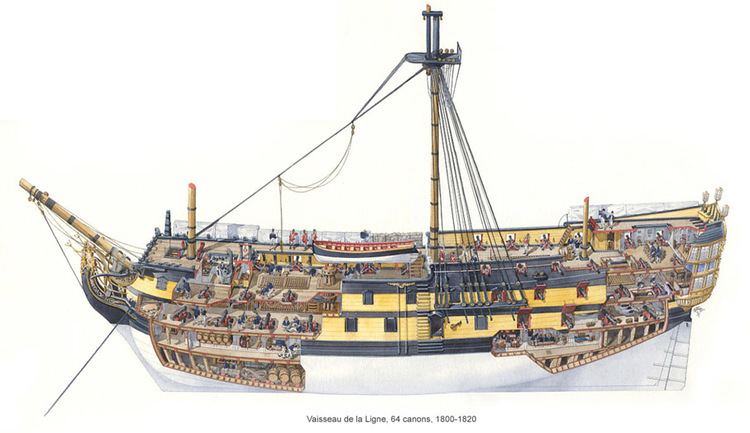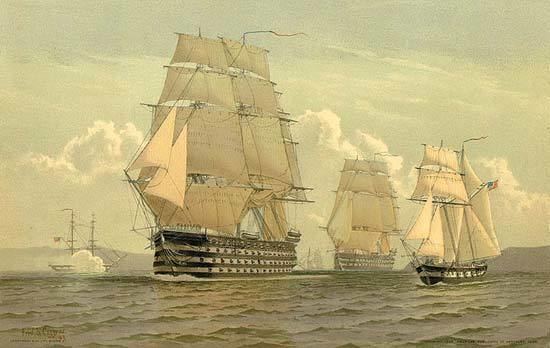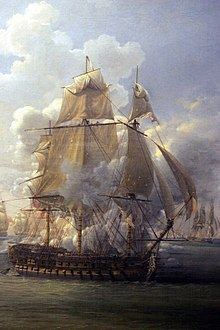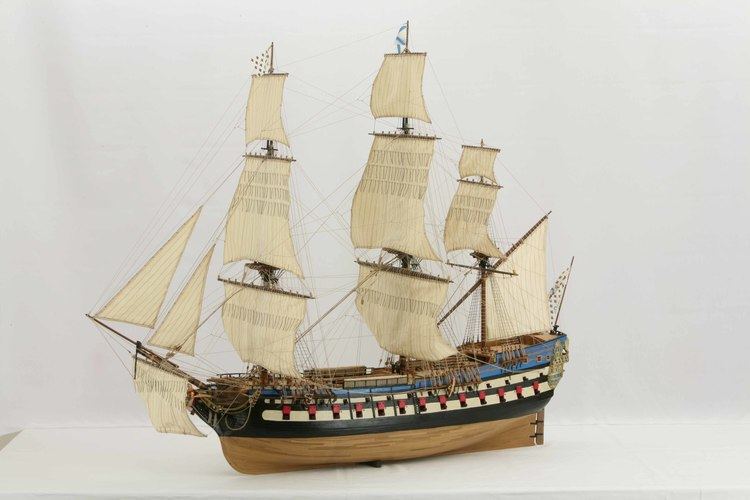 | ||
Similar Frigate, Galleon, Sailing ship | ||
Asmr model ship of the line show and tell
A ship of the line was a type of naval warship constructed from the 17th through to the mid-19th century to take part in the naval tactic known as the line of battle, in which two columns of opposing warships would manoeuvre to bring the greatest weight of broadside firepower to bear. Since these engagements were almost invariably won by the heaviest ships carrying the most powerful guns, the natural progression was to build sailing vessels that were the largest and most powerful of their time.
Contents
- Asmr model ship of the line show and tell
- Naval action french ship of the line l ocean gameplay preview
- Predecessors
- Line of battle adoption
- Evolution of design
- Steam power
- Decline
- Combat
- Restorations and preservation
- References

From the end of the 1840s, the introduction of steam power brought less dependence on the wind in battle and led to the construction of screw-driven, wooden-hulled, ships of the line; a number of pure sail-driven ships were converted to this propulsion mechanism. However, the introduction of the ironclad frigate in about 1859 led swiftly to the decline of the steam-assisted ships of the line. The ironclad warship became the ancestor of the 20th-century battleship, whose very designation is itself a contraction of the phrase "ship of the line of battle" or, more colloquially, "line-of-battle ship".

The term "ship of the line" has fallen into disuse except in historical contexts, after warships and naval tactics evolved and changed from the mid 19th century.

Naval action french ship of the line l ocean gameplay preview
Predecessors

The heavily armed carrack, first developed in Portugal for either trade or war in the Atlantic Ocean, was the precursor of the ship of the line. Other maritime European states quickly adopted it in the late 15th and early 16th centuries. These vessels were developed by fusing aspects of the cog of the North Sea and galley of the Mediterranean Sea. The cogs, which traded in the North Sea, in the Baltic Sea and along the Atlantic coasts, had an advantage over galleys in battle because they had raised platforms called "castles" at bow and stern that archers could occupy to fire down on enemy ships or even to drop heavy weights from. Over time these castles became higher and larger, and eventually were built into the structure of the ship, increasing overall strength. This aspect of the cog remained in the newer-style carrack designs and proved its worth in battles like that at Diu in 1509.

The Mary Rose was an early 16th century English carrack or "great ship". She was heavily armed with 78 guns and 91 after an upgrade in the 1530s. Built in Portsmouth in 1510–1512, she was one of the earliest purpose-built men-of-war in the English navy. She was over 500 tons burthen, had a keel of over 32 m (106 ft) and a crew of 200 sailors, 185 soldiers and 30 gunners. Although the pride of the English fleet, she accidentally sank during the Battle of the Solent, 19 July 1545.
Henri Grâce à Dieu (English: "Henry Grace of God"), nicknamed "Great Harry", was another early English carrack. Contemporary with Mary Rose, Henri Grâce à Dieu was 165 feet (50 m) long, weighing 1,000–1,500 tons and having a complement of 700–1,000. It is said that she was ordered by Henry VIII in response to the Scottish ship Michael, launched in 1511. She was originally built at Woolwich Dockyard from 1512 to 1514 and was one of the first vessels to feature gunports and had twenty of the new heavy bronze cannon, allowing for a broadside. In all she mounted 43 heavy guns and 141 light guns. She was the first English two-decker, and when launched she was the largest and most powerful warship in Europe, but she saw little action. She was present at the Battle of the Solent against Francis I of France in 1545 (in which Mary Rose sank) but appears to have been more of a diplomatic vessel, sailing on occasion with sails of gold cloth. Indeed, the great ships were almost as well known for their ornamental design (some ships, like the Vasa, were gilded on their stern scrollwork) as they were for the power they possessed.
Carracks fitted for war carried large-calibre guns aboard. Because of their higher freeboard and greater load-bearing ability, this type of vessel was better suited than the galley to gunpowder weapons. Because of their development for conditions in the Atlantic, these ships were more weatherly than galleys and better suited to open waters. The lack of oars meant that large crews were unnecessary, making long journeys more feasible. Their disadvantage was that they were entirely reliant on the wind for mobility. Galleys could still overwhelm great ships, especially when there was little wind and they had a numerical advantage, but as great ships increased in size, galleys became less and less useful.
Another detriment was the high forecastle, which interfered with the sailing qualities of the ship; the bow would be forced low into the water while sailing before the wind. But as guns were introduced and gunfire replaced boarding as the primary means of naval combat during the 16th century, the medieval forecastle was no longer needed, and later ships such as the galleon had only a low, one-deck-high forecastle. By the time of the 1637 launching of England's Sovereign of the Seas, the forecastle had disappeared altogether.
During the 16th century the galleon evolved from the carrack. It was a longer and more manoeuvrable type of ship with all the advantages of the carrack. The main ships of the English and Spanish fleets in the Battle of Gravelines of 1588 were galleons; all of the English and most of the Spanish galleons survived the battle and the following storm even though the Spanish galleons suffered the heaviest attacks from the English while regrouping their scattered fleet. By the 17th century every major European naval power was building ships like these.
With the growing importance of colonies and exploration and the need to maintain trade routes across stormy oceans, galleys and galleasses (a larger, higher type of galley with side-mounted guns, but lower than a galleon) were used less and less, and only in ever more restricted purposes and areas, so that by about 1750, with a few notable exceptions, they were of little use in naval battles.
Line-of-battle adoption
King Erik XIV of Sweden initiated construction of the ship Mars in 1563; this might have been the first attempt of this battle tactic, roughly 50 years ahead of widespread adoption of the Line of Battle strategy. Mars was likely the largest ship in the World at the time of her build, equipped with 107 guns at a full length of 96 meters. Ironically it became the first ship to be sunk by gunfire from other ships in a naval battle.
In the early to mid-17th century, several navies, particularly those of the Netherlands and England, began to use new fighting techniques. Previously battles had usually been fought by great fleets of ships closing with each other and fighting in whatever arrangement they found themselves in, often boarding enemy vessels as opportunities presented themselves. As the use of broadsides (coordinated fire by the battery of cannon on one side of a warship) became increasingly dominant in battle, tactics changed. The evolving line-of-battle tactic, first used in an ad-hoc way, required ships to form single-file lines and close with the enemy fleet on the same tack, battering the enemy fleet until one side had had enough and retreated. Any manoeuvres would be carried out with the ships remaining in line for mutual protection.
In order that this order of battle, this long thin line of guns, may not be injured or broken at some point weaker than the rest, there is at the same time felt the necessity of putting in it only ships which, if not of equal force, have at least equally strong sides. Logically it follows, at the same moment in which the line ahead became definitively the order for battle, there was established the distinction between the ships 'of the line', alone destined for a place therein, and the lighter ships meant for other uses.
The lighter ships were used for various functions, including acting as scouts, and relaying signals between the flagship and the rest of the fleet. This was necessary because from the flagship, only a small part of the line would be in clear sight.
The adoption of line-of-battle tactics had consequences for ship design. The height advantage given by the castles fore and aft was reduced, now that hand-to-hand combat was less essential. The need to manoeuvre in battle made the top weight of the castles more of a disadvantage. So they shrank, making the ship of the line lighter and more manoeuvrable than its forebears for the same combat power. As an added consequence, the hull itself grew larger, allowing the size and number of guns to increase as well.
Evolution of design
In the 17th century fleets could consist of almost a hundred ships of various sizes, but by the middle of the 18th century, ship-of-the-line design had settled on a few standard types: older two-deckers (i.e., with two complete decks of guns firing through side ports) of 50 guns (which were too weak for the battle line but could be used to escort convoys), two-deckers of between 64 and 90 guns that formed the main part of the fleet, and larger three- or even four-deckers with 98 to 140 guns that served as admirals' command ships. Fleets consisting of perhaps 10 to 25 of these ships, with their attendant supply ships and scouting and messenger frigates, kept control of the sea lanes for major European naval powers whilst restricting the sea-borne trade of enemies.
The most common size of sail ship of the line was the "74" (named for its 74 guns), originally developed by France in the 1730s, and later adopted by all battleship navies. Until this time the British had 6 sizes of ship of the line, and they found that their smaller 50- and 60-gun ships were becoming too small for the battle line, while their 80s and over were three-deckers and therefore unwieldy and unstable in heavy seas. Their best were 70-gun three-deckers of about 46 metres (150 ft) long on the gundeck, while the new French 74s were around 52 metres (170 ft). In 1747 the British captured a few of these French ships during the War of Austrian Succession. In the next decade Thomas Slade (Surveyor of the navy from 1755, along with co-Surveyor William Bately) broke away from the past and designed several new classes of 51- to 52-metre 74s to compete with these French designs, starting with the Dublin and Bellona classes. Their successors gradually improved handling and size through the 1780s. Other navies ended up building 74s also as they had the right balance between offensive power, cost, and manoeuvrability. Eventually around half of Britain's ships of the line were 74s. Larger vessels were still built, as command ships, but they were more useful only if they could definitely get close to an enemy, rather than in a battle involving chasing or manoeuvring. The 74 remained the favoured ship until 1811, when Seppings's method of construction enabled bigger ships to be built with more stability.
In a few ships the design was altered long after the ship was launched and in service. In the Royal Navy, smaller two-deck 74- or 64-gun ships of the line that could not be used safely in fleet actions had their upper decks removed (or razeed), resulting in a very stout, single-gun-deck warship called a razee. The resulting razeed ship could be classed as a frigate and was still much stronger. The most successful razeed ship in the Royal Navy was HMS Indefatigable, commanded by Sir Edward Pellew.
Mahmudiye (1829), ordered by the Ottoman Sultan Mahmud II and built by the Imperial Naval Arsenal on the Golden Horn in Istanbul, was for many years the largest warship in the world. The 76.15 m × 21.22 m (249.8 ft × 69.6 ft) ship of the line was armed with 128 cannons on three decks and was manned by 1,280 sailors. She participated in the Siege of Sevastopol (1854–1855) during the Crimean War (1854–1856). She was decommissioned in 1874.
The largest sailing three-decker ship of the line ever built in the West was the French Valmy, launched in 1847. She had right sides, which increased significantly the space available for upper batteries, but reduced the stability of the ship; wooden stabilisers were added under the waterline to address the issue. Valmy was thought to be the largest sort of sailing ship possible, as larger dimensions made the manoeuvre of riggings impractical with mere manpower. She participated in the Crimean War, and after her return to France later housed the French Naval Academy under the name Borda from 1864 to 1890.
Steam power
The first major change to the ship-of-the-line concept was the introduction of steam power as an auxiliary propulsion system. The first military uses of steamships came in the 1810s, and in the 1820s a number of navies experimented with paddle steamer warships. Their use spread in the 1830s, with paddle-steamer warships participating in conflicts like the First Opium War alongside ships of the line and frigates.
Paddle steamers, however, had major disadvantages. The paddle wheel above the waterline was exposed to enemy fire, while itself preventing the ship from firing broadsides effectively. During the 1840s, the screw propeller emerged as the most likely method of steam propulsion, with both Britain and the USA launching screw-propelled warships in 1843. Through the 1840s, the British and French navies launched ever larger and more powerful screw ships, alongside sail-powered ships of the line. In 1845, Viscount Palmerston gave an indication of the role of the new steamships in tense Anglo-French relations, describing the English Channel as a "steam bridge", rather than a barrier to French invasion. It was partly because of the fear of war with France that the Royal Navy converted several old 74-gun ships of the line into 60-gun steam-powered blockships (following the model of Fulton's Demologos), starting in 1845. The blockships were "originally conceived as steam batteries solely for harbour defence, but in September 1845 they were given a reduced [sailing] rig rather than none at all, to make them sea-going ships.… The blockships were to be a cost-effective experiment of great value." They subsequently gave good service in the Crimean War.
The French Navy, however, developed the first purpose-built steam battleship with the 90-gun Le Napoléon in 1850. She is also considered the first true steam battleship, and the first screw battleship ever. Napoleon was armed as a conventional ship of the line, but her steam engines could give her a speed of 12 knots (22 km/h), regardless of the wind conditions—a potentially decisive advantage in a naval engagement.
Eight sister ships to Le Napoléon were built in France over a period of ten years, but the United Kingdom soon took the lead in production, in number of both purpose-built and converted units. Altogether, France built 10 new wooden steam battleships and converted 28 from older battleship units, while the United Kingdom built 18 and converted 41.
In the end, France and Britain were the only two countries to develop fleets of wooden steam screw battleships, although several other navies made some use of a mixture of screw battleships and paddle-steamer frigates. These included Russia, Turkey, Sweden, Naples, Prussia, Denmark, and Austria.
Decline
In the Crimean War, six line-of-battle ships and two frigates of the Russian Black Sea Fleet destroyed seven Turkish frigates and three corvettes with explosive shells at the Battle of Sinop in 1853.
In the 1860s unarmoured steam line-of-battle ships were replaced by ironclad warships. On March 8, 1862, during the first day of the Battle of Hampton Roads, two unarmoured wooden frigates were sunk and destroyed by the Confederate ironclad CSS Virginia.
However, the power implied by the ship of the line would find its way into the ironclad, which would develop during the next few decades into the concept of the battleship.
Combat
In the North Sea and Atlantic Ocean, the fleets of England and later Britain, the Netherlands, France, Spain and Portugal fought numerous battles. In the Baltic Sea, Sweden, Denmark, the Netherlands, and Russia did likewise, while in the Mediterranean Sea, the Ottoman Empire, Venice, Spain, France, Britain and Russia battled.
During the Napoleonic Wars, Britain's Royal Navy established itself as the supreme world naval power by defeating a Spanish fleet near Cape St Vincent in 1797, a French fleet at the Bay of Aboukir off the Egyptian coast at the Battle of the Nile in 1798, a combined Franco-Spanish fleet near Cape Trafalgar in Spain at the Battle of Trafalgar in 1805, and the Danish fleet in the bombardment of Copenhagen in the second Battle of Copenhagen (1807). Britain emerged from the Napoleonic Wars in 1815 with the largest and most professional navy in the world, composed of hundreds of wooden, sail-powered ships of all sizes and classes. The Royal Navy demonstrated this naval supremacy again during the Crimean War in the 1850s.
Nonetheless, the Napoleonic Wars, as well as the American War of 1812, had illustrated the shortcomings of ships of the line when an enemy resorted to tactics including the large-scale use of privateers. Both the French and the Americans had demonstrated what a menace small, lightly armed, but fast, nimble, and, most especially, numerous vessels like sloops and schooners could be when they spread across the wide oceans, operating singly or in small groups. They targeted the merchant shipping that was Britain's economic lifeblood, and ships of the line were too few, too slow, and too clumsy to be employed against them.
Overwhelming firepower was of no use if it could not be brought to bear: the Royal Navy's initial response to Napoleon's privateers, which operated from French New World territories, was to buy Bermuda sloops. Similarly, the East India Company's merchant vessels became lightly armed and quite competent in combat during this period, operating a convoy system under an armed merchantman, instead of depending on small numbers of more heavily armed ships.
Restorations and preservation
The only original ship of the line remaining today is HMS Victory, preserved as a museum in Portsmouth to appear as she was while under Admiral Horatio Nelson at the Battle of Trafalgar in 1805. Although Victory is in drydock, she is still a fully commissioned warship in the Royal Navy and is the oldest commissioned warship in any navy worldwide.
Regalskeppet Vasa sank in the Baltic in 1628 and was lost until 1956. She was then raised intact, in remarkably good condition, in 1961 and is presently on display at the Vasa Museum in Stockholm, Sweden. At the time she was the largest Swedish warship ever built. Today the Vasa Museum is the most visited museum in Sweden.
